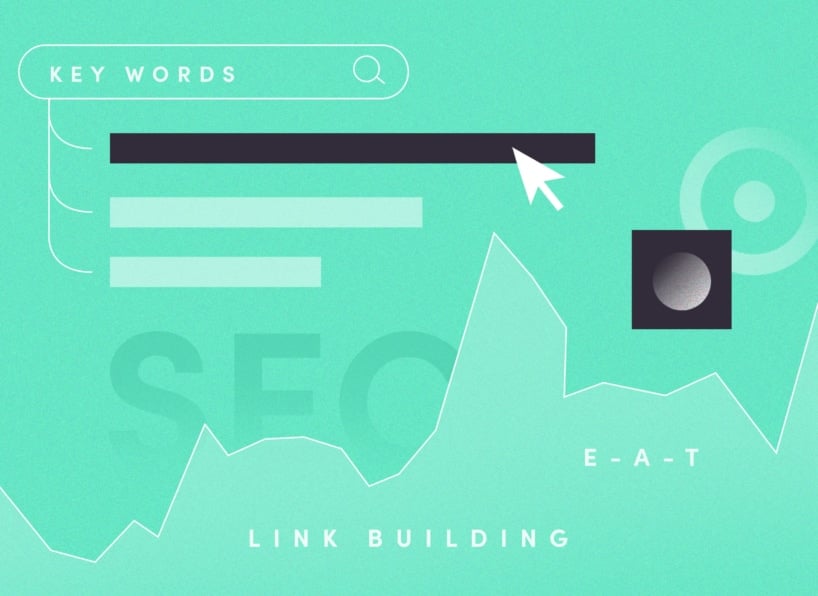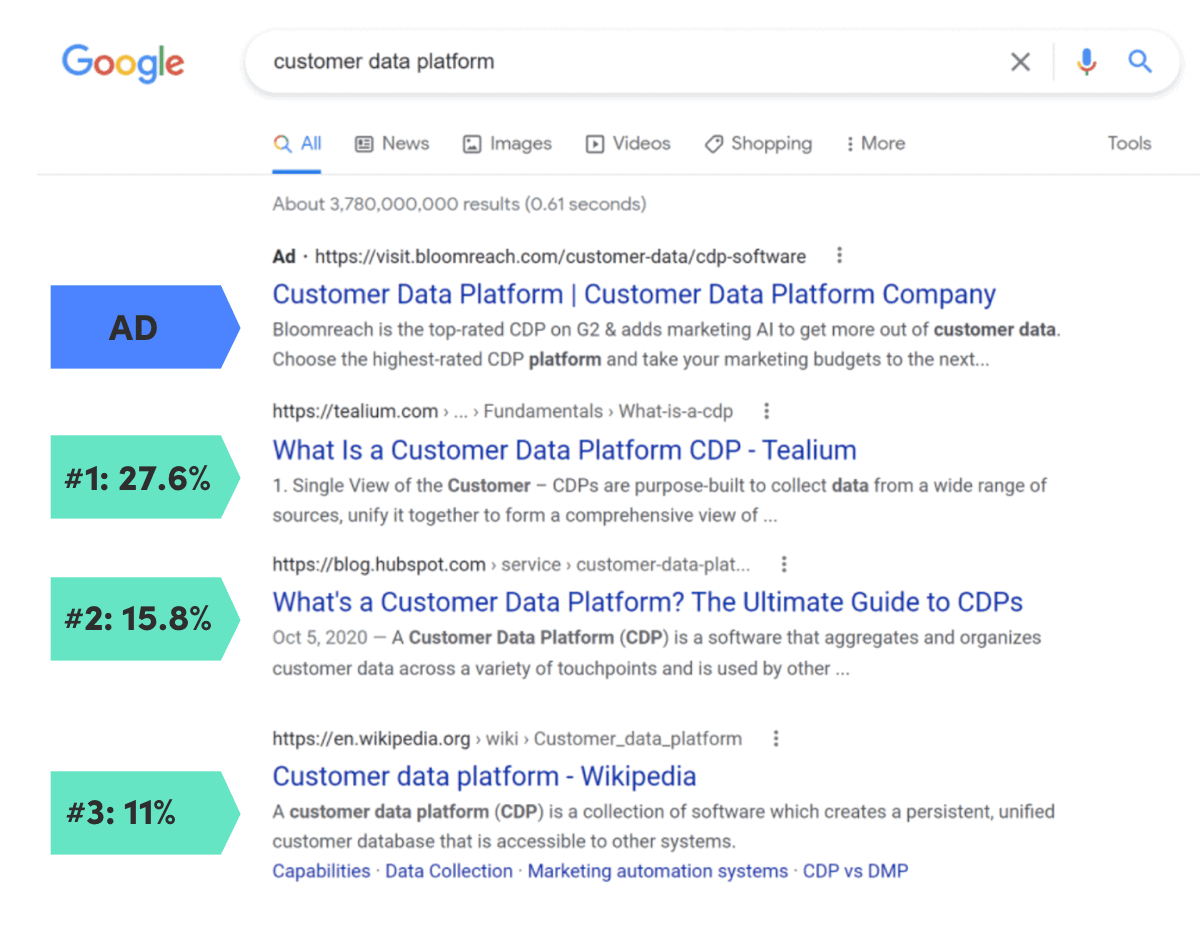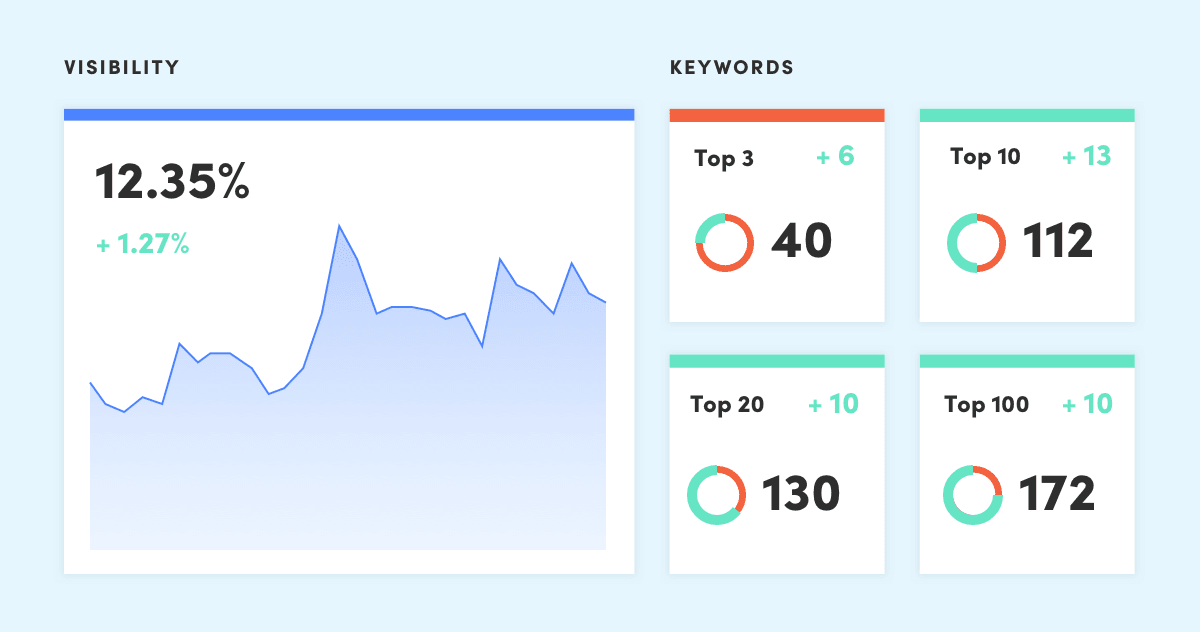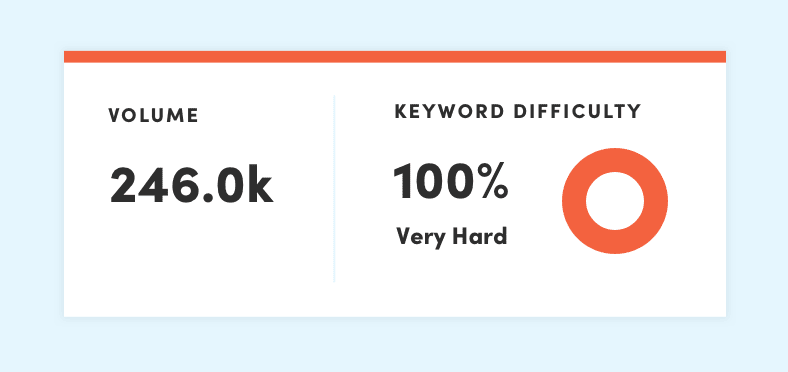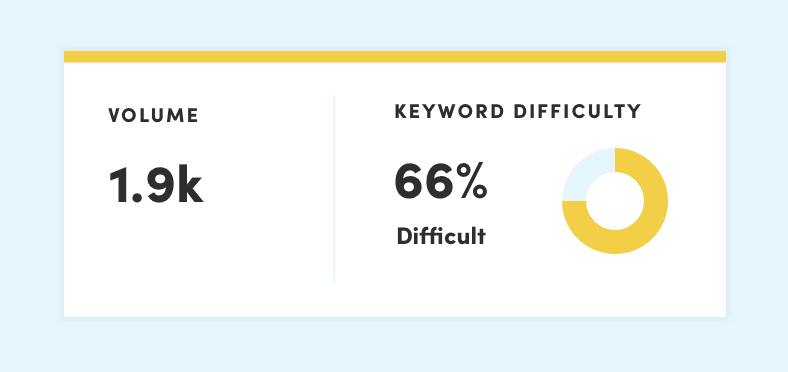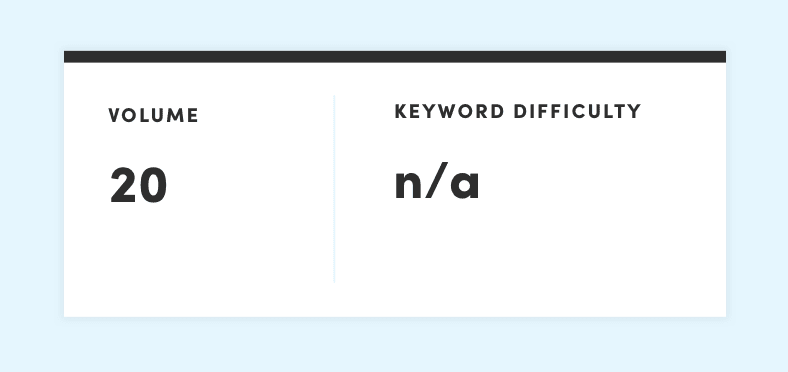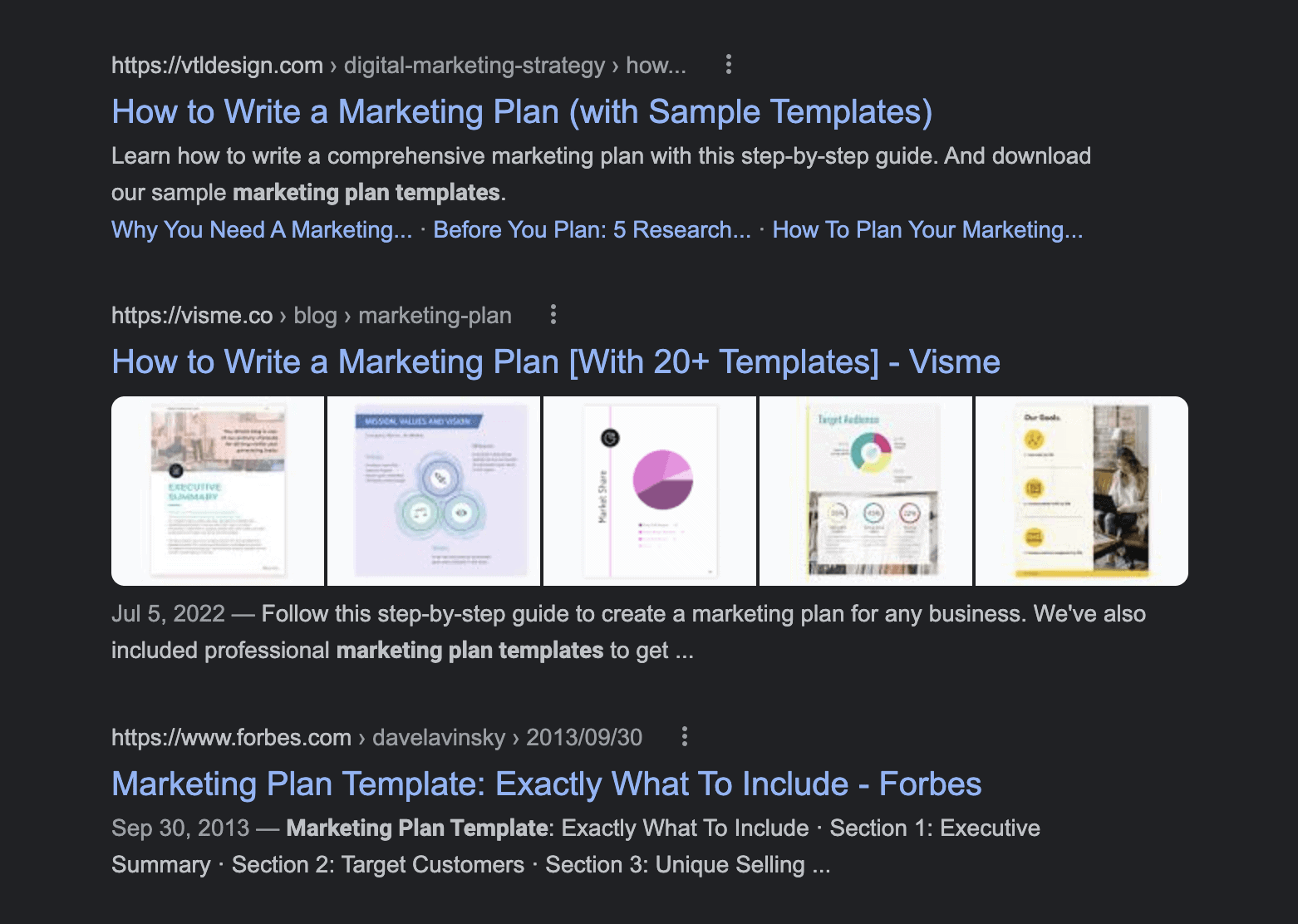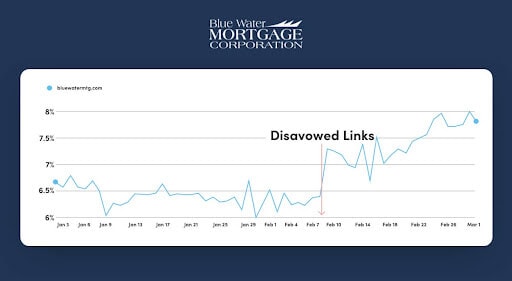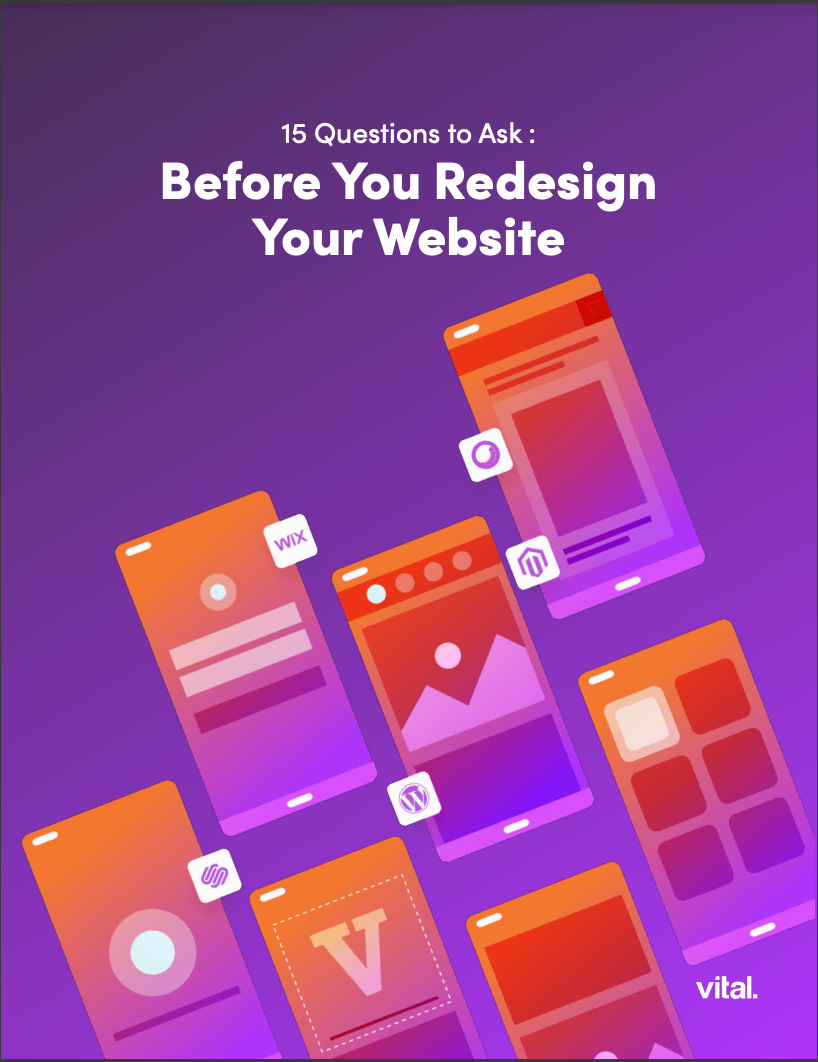Search engine optimization (SEO) is all about showing up in search results for keywords and phrases that are valuable to your business. Most of the time, marketers focus on trying to improve their page ranking on the search engine results page (SERP) — and with good reason.
Data from Backlinko shows that, as of 2023, the number one result on the SERP gets an average click-through rate of 39.8%. This compares to 18.7% for the number two result and 10.2% for the number three result — and the numbers drop off from there, to practically nothing once you reach the second page of results.
There are a lot of SEO myths out there about how to improve your page rankings. But if you look at SEO holistically, individual page rankings aren’t the be-all end-all when it comes to getting more visitors to your site. One of the key markers of a website’s overall SEO health is something called “site visibility.”
Vital has been experimenting with tactics to make our clients’ sites more visible on Google, and we found one great trick that can work for almost any website. But before we get to the tactics, let’s make sure we’re on the same page about what site visibility means and why it’s important to your business.
What Is Site Visibility on Google?
Also known as “search engine visibility,” site visibility is the percentage of traffic your website gets from its organic search result rankings on Google. For an individual keyword, your site visibility is roughly equal to the average click-through rate for whatever position you own on the SERP.
For example, if you have a page that ranks in position #2 on the SERP, your site visibility for that keyword would be about 15.8%. That’s good to know. But more important for your business than your visibility for a single given keyword is your overall site visibility. We use SEMrush to measure overall website search visibility for our clients and our own website.
The site-wide visibility metric gives you a score that takes into account every keyword that you rank for. For the client above, they’re getting 12.35% of organic traffic for all the keywords they rank for. (That’s pretty darn good.)
Since the goal of SEO is to drive traffic to your site, improving your overall site visibility on Google is extremely important. So, how do you do that? Read on.
Four Basic Tips to Make Your Website More Visible
To be more visible on Google, you’ll need to rank higher for more keywords. That’s obvious. But instead of just cranking out more content, a little bit of basic search visibility strategy will go a long way. Here’s where to start:
1. Target Easier Keywords
Everyone wants to rank number one on the SERP for keywords that get tons of search volume. Unfortunately, unless you’re already a very big deal in Google’s eyes, you don’t stand a chance of making it into the top spot (or even the first page) for the terms that generate the most traffic.
That’s because of something called keyword difficulty. When you do keyword research with a tool like SEMrush, it’ll give you both the search volume and the keyword difficulty score. For example, let’s say you sell life insurance. Naturally, you’d love to rank for the term “life insurance.” As you can see, that’s not going to happen:
Let’s not shoot for the moon, then. How about a more specific search term with a lower search volume, like “How does whole life insurance work?”
A little better, but still not feasible for a lot of businesses. Keep drilling down to more specific, niche keywords with lower volume. Like, “How does cash value work for whole life insurance?”
Bingo.
I know what you’re thinking — 20 searches a month, are you kidding me? Admittedly, this is a bit of an extreme example. But if you can write one blog post a month that ranks for a term with a search volume of 20 and no measurable keyword difficulty, you’ll be on your way to boosting your site’s visibility over time. And, with the way Google works, the more visible your site is, the easier it becomes to start ranking for more competitive keywords.
2. Improve Your Click-Through Rate
Remember how I said that your click-through rate is determined by your position on the SERP? That’s true. Ish. What you need to know is that if the number one search result gets 39.8% of clicks, that’s an average. Some content in the number one spot will perform better than that; some will perform worse.
And your click-through rate is a key ranking factor for Google. That means that if you’re in position number one and you get fewer than 27.6% of clicks, you risk getting bumped down to number two— which will then decrease your click-through rate even more.
The good news is, it works the other way around, too. Let’s say you’re in position number three for a keyword. According to the data, you should get 11% of clicks from people searching for that keyword. If you can beat that number, you increase your chances of moving up in the SERP. This will get you an even higher click-through rate, thereby increasing your site visibility.
If you can improve your click-through rate at scale — for a lot of keywords, not just one or two — you’re cooking with gas.
So, how do you beat the averages and boost your click-through rates? You hire a really good copywriter, or at least brush up your writing skills. That’s because the way to get more people to click on your results is by making your title tags and meta descriptions more compelling and more aligned with searcher intent than your competition’s.
Here’s an example using “Marketing Plan Template,” a keyword that Vital ranks in the #2 spot for. (Just below our friends at Hubspot, not too shabby).
As you can see, the title is super clear and in line with what most people searching for the term want: a how-to guide with templates. Similarly, the meta description is short, to the point, and reinforces that the searcher will get what they’re looking for.
I’m a little concerned about visme.co coming up behind us with their images, so I might hit up our marketing team to get some properly tagged and formatted images in our post — but their meta description is truncated, which isn’t doing them any favors.
The number four result comes from a high-authority domain, and includes the actual keyword in its title, but it’s from 2013 and their meta description is pulled straight from the article rather than being written to persuade people to click.
3. Improve Your Website’s Experience, Expertise, Authority, and Trustworthiness (E-E-A-T)
Let’s go back to keyword competitiveness for a minute. Remember that “life insurance” had a competitiveness score of 100%? Well, someone must be ranking for it. Let’s see who.
Oh, look, it’s Liberty Mutual. Maybe you’ve heard of them. Who’s next in line?
2. Geico
3. Allstate
4. Prudential
…you get the idea. (I mean, a U.S. News article ranking the best life insurance companies of December 2022 is on the second page of the SERP, for goodness’ sake.)
What’s going on here? Well, part of it is simple name recognition. People searching for “life insurance” are generally looking for (you guessed it) life insurance, and they’re more likely to click on a result from a brand they know than from, say, Uncle Charley’s Life Insurance Blog.
But another piece of the puzzle is experience, expertise, authority, and trustworthiness, or E-E-A-T. Google didn’t get its huge market share (around 83% of the global search market, according to Statista) by serving up dubious search results. In order to ensure the quality of its results, Google takes into account the experience, expertise, authority, and trustworthiness of the source.
A lot of factors go into determining E-E-A-T. For a long time, it used to be called just E-A-T. Google added the extra E for experience in December 2022. Why? According to Google, “There are some situations where really what you value most is content produced by someone who has first-hand, life experience on the topic at hand.” In other words, for certain topics, Google knows searchers are looking for street smarts, not just book (or, more likely, Wikipedia) smarts. We happen to love that this new update prioritizes real-world experience at exactly the moment when AI tools like ChatGPT are becoming more prevalent because it will hopefully help address the “dumbing down” of content that comes from regurgitating information (even expert information) that already exists online.
In addition to making sure that you’re publishing high-quality, authoritative content that draws from real experience and expertise, you can increase your website’s E-E-A-T by getting links to your content from other high-quality sites that are in your industry niche. The most popular way to do this is through link building. To learn more about using link building to improve your E-E-A-T, and therefore your site visibility, check out this video from Vital’s very own link-building department.
4. One Fast Way to Boost Your Website’s Visibility
I just mentioned that link building is one way to increase site visibility — but not all links are created equal. Google gives more weight to links that come from highly authoritative, credible sources — in other words, sites with better E-E-A-T credentials. It’s also important that the links come from sites that are relevant to your industry. To go back to the insurance example, a link from a Forbes article on life insurance counts a lot more than, say, a link from your grandmother’s gardening blog. (Unless Grandma is a big TikTok influencer in the insurance space, too. You never know.)
Some links are just plain garbage, placed on aggregator sites and other spam sources. You can “disavow” links, which means Google will ignore them in determining your site’s ranking and visibility. However, Google’s algorithms are complicated, and it hasn’t been clear whether disavowing spam links will hurt or help your site’s visibility.
Until now. Following Google’s latest algorithm update, we decided to run a test for our client Blue Water Mortgage. On February 8, our SEO strategists disavowed 60 spam links to Blue Water Mortgage’s website. The site’s search visibility skyrocketed — almost immediately. Check it out:
Now that we know it works, we’ll be scrubbing spam links for clients — and, of course, our own website — as part of our strategy to increase site visibility and traffic.
Get Help Getting Your Website Noticed on Google
The four tactics we’ve outlined here are both doable and effective, but it’s not the end of the site visibility story. There’s a lot more you can do to improve site visibility, page rankings, and traffic, including:
- Improving site performance and speed
- Making sure your mobile U/X is on point
- Creating “sticky” content that keeps users engaged longer
- Increase the number of internal links on your site
- Optimize content for featured snippets
Intrigued? Learn more about Vital’s holistic approach to SEO and digital marketing here.
